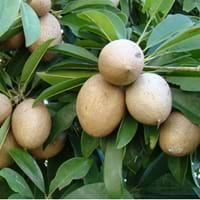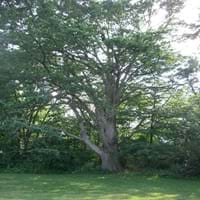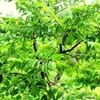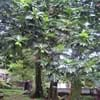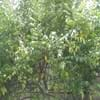Life Span
Perennial
Perennial
Origin
Hybrid origin, Mexico, Central America, South America
North America, United States, Northeastern United States, Mid-Atlantic United States, Central United States, South-Central United States, Texas, Mexico
Types
Not Available
Not Available
Habitat
Coastal Regions
Forests, Ridges, Rocky areas
USDA Hardiness Zone
11-15
4-8
Sunset Zone
A1, A2, A3, H1, H2, 1a, 1b, 2a, 2b, 3a, 3b, 4, 5, 6, 7, 8, 9, 10, 11, 12, 13, 14, 15, 16, 17, 18, 19, 20, 21, 22, 23, 24
2a, 2b, 3a, 3b, 4, 5, 6, 7, 8, 9, 10, 11, 12, 14, 15, 16, 17
Habit
Upright/Erect
Oval or Rounded
Flower Color
Yellow
Red, Light Green, Chartreuse
Flower Color Modifier
Bicolor
Bicolor
Leaf Color in Spring
Green, Dark Green
Green, Yellow green
Leaf Color in Summer
Green, Dark Green
Dark Green
Leaf Color in Fall
Green, Dark Green
Yellow, Orange
Leaf Color in Winter
Green, Dark Green
Not Available
Plant Season
Spring, Summer, Fall
Spring, Summer, Fall
Sunlight
Full Sun
Full Sun
Type of Soil
Loam, Sand
Clay, Loam
The pH of Soil
Neutral
Neutral, Alkaline
Soil Drainage
Well drained
Well drained
Bloom Time
Indeterminate
Spring, Late Spring
Tolerances
Drought
Pollution, Salt
Where to Plant?
Container, Ground
Ground
How to Plant?
Grafting, Seedlings
Seedlings, Stem Planting
Plant Maintenance
Medium
Low
Watering Requirements
Needs more water during establishment
Do Not over Water, Never Over-water, Requires regular watering
In Summer
Lots of watering
Lots of watering
In Spring
Moderate
Moderate
In Winter
Average Water
Average Water
Soil pH
Neutral
Neutral, Alkaline
Soil Type
Loam, Sand
Clay, Loam
Soil Drainage Capacity
Well drained
Well drained
Sun Exposure
Full Sun
Full Sun
Pruning
Pinch or prune as they grow to promote branching and bushiness
Remove damaged leaves, Remove dead leaves, Remove dead or diseased plant parts, Remove hanging branches
Fertilizers
14-14-14 Fertilizer, Compost
Fertilize the first year, No need to fertilize every year
Pests and Diseases
Anthracnose, Aphids, Red blotch, Rust
Insects, Red blotch
Plant Tolerance
Heat Tolerance, Salt and Soil Compaction
Salt
Flowers
Showy
Insignificant
Flower Petal Number
Single
Not Available
Fragrant Bark/Stem
Yes
No
Foliage Texture
Medium
Coarse
Foliage Sheen
Matte
Glossy
Attracts
Aphids, Not Available, Squirrels
Birds
Allergy
Stomach pain, Vomiting
Asthma
Aesthetic Uses
Used in parkland
Landscape Designing
Beauty Benefits
Anti-ageing, Blackheads, Reduce Bruises
No Beauty Benefits
Environmental Uses
Shadow Tree, Soil protection
Air purification, Amazing growth rate, Food for insects, Nesting sites for birds, No fertilizer, pesticides, or herbicides needed, Prevent Soil Erosion
Medicinal Uses
Dehydration, Diabetes, Diarrhea, Nutrients, Weight loss
No Medicinal Use
Part of Plant Used
Fruits
Tree trunks
Other Uses
Application in Handicrafts, Food for animals, Showy Purposes
Air freshner, Application in Furniture, Economic Purpose, Used as firewood, Used in construction, Used in pulpwood and lumber production, Wood is used for making furniture, Wood is used fore making tools, Wood is used in construction
Used As Indoor Plant
No
No
Used As Outdoor Plant
Yes
Yes
Garden Design
Edible, Herb, Vegetable
Feature Plant, Shade Trees
Botanical Name
Manilkara zapota
QUERCUS muehlenbergii
Common Name
sapodilla , chikoo, Sapota
Chinkapin Oak, Yellow Chestnut Oak
In Hindi
चीकू
Chinkapin ओक
In German
Breiapfelbaum
chinkapin Oak
In French
Sapotillier
chinkapin Oak
In Spanish
chicle
chinkapin Roble
In Greek
sapodilla
Chinkapin Oak
In Portuguese
sapodilla
carv Oak
In Polish
Pigwica właściwa, sapodilla
Chinkapin Oak
In Latin
sapodilla
Oak Chinkapin
Phylum
Magnoliophyta
Tracheophyta
Class
Magnoliopsida
Magnoliopsida
Family
Sapotaceae
Fagaceae
Clade
Angiosperms, Asterids, Eudicots
Angiosperms, Eudicots, Rosids
Tribe
Sapoteae
Not Available
Subfamily
Sapotoideae
Quercoideae
Number of Species
Not Available
Season and Care of Sapodilla and Chinkapin Oak
Season and care of Sapodilla and Chinkapin Oak is important to know. While considering everything about Sapodilla and Chinkapin Oak Care, growing season is an essential factor. Sapodilla season is Spring, Summer and Fall and Chinkapin Oak season is Spring, Summer and Fall. The type of soil for Sapodilla is Loam, Sand and for Chinkapin Oak is Clay, Loam while the PH of soil for Sapodilla is Neutral and for Chinkapin Oak is Neutral, Alkaline.
Sapodilla and Chinkapin Oak Physical Information
Sapodilla and Chinkapin Oak physical information is very important for comparison. Sapodilla height is 150.00 cm and width 60.00 cm whereas Chinkapin Oak height is 1,220.00 cm and width 1,520.00 cm. The color specification of Sapodilla and Chinkapin Oak are as follows:
Sapodilla flower color: Yellow
Sapodilla leaf color: Green and Dark Green
Chinkapin Oak flower color: Red, Light Green and Chartreuse
- Chinkapin Oak leaf color: Green and Yellow green
Care of Sapodilla and Chinkapin Oak
Care of Sapodilla and Chinkapin Oak include pruning, fertilizers, watering etc. Sapodilla pruning is done Pinch or prune as they grow to promote branching and bushiness and Chinkapin Oak pruning is done Remove damaged leaves, Remove dead leaves, Remove dead or diseased plant parts and Remove hanging branches. In summer Sapodilla needs Lots of watering and in winter, it needs Average Water. Whereas, in summer Chinkapin Oak needs Lots of watering and in winter, it needs Average Water.
